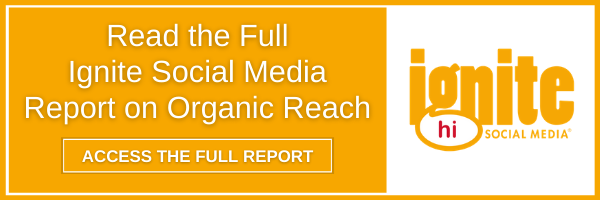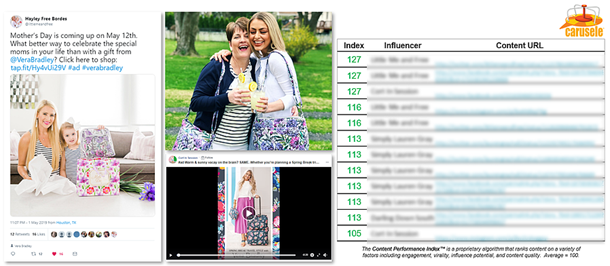Organic-Only Influencer Strategies ≠ ROI

As influencer marketing becomes a more sophisticated marketing tactic, more and more brands are investing their marketing dollars into the industry. Even with the number of programs that were paused throughout 2020 due to the pandemic, 63% of businesses report that they intend to increase their influencer spending over the next 12 months. With that in mind, it's important that brands have an influencer marketing strategy in place that can effectively reach target audiences... but if that strategy is 100% relying on the organic reach of your influencer partners, it's unlikely that you're going to see a positive ROI.
What's Up with Organic Reach on Social Media
Why? Organic reach has been in decline since 2013. Our sister agency, Ignite Social Media, was the first to report the decline of Facebook's organic reach after conducting an analysis of nearly 700 posts across 21 brand pages on the channel. At that time, Facebook was touting an organic reach of about 16% while Ignite's findings showed 2.5% as the new standard.
Fast-forward to today. Ignite recently conducted a new analysis of over 8,500 posts on 31 brand accounts across not only Facebook but Instagram and Linkedin as well. Considering Instagram and Facebook content are among the most important influencer marketing formats to US marketers, understanding the organic reach of these channels is very important, especially if you're only relying on an organic-only influencer marketing strategy.
Now before I tell you the results, take a guess at what organic reach looks like today...
Here's the breakdown on Facebook and Instagram assuming that the recent analysis from Ignite was to apply to influencer content. Let's say you've hired 5 influencers, each with 100,000 followers on Facebook and 100,000 followers on Instagram.
- Each influencer would reach about 2,200 (2.2%) followers on Facebook.
- Your total Facebook reach would estimate to 11,000 followers.
- Each influencer would reach about 9,400 (9.4%) followers on Instagram.
- Your total Instagram reach would estimate to 47,000 followers.
- Your total estimated reach across both channels would be 58,000 out of 1M followers - meaning you only reach 5.8% of the potential audience.
And it doesn't end there. When you're partnering with an influencer, it's unlikely that 100% of their followers fit within your target audience. Add in a geographical component (for example, trying to reach people in New York with a New York influencer) it's even more unlikely that 100% of their followers actually reside in the same location as the influencer.
It's because of these factors and the decline of organic reach on social networks that make the argument that paid media support is essential to a successful influencer marketing strategy. Only through paid media is your brand going to be able to control who actually sees the influencer content.
How to Effectively Incorporate Paid Media Into Your Influencer Strategy
So then, what's the best way to incorporate paid media into your influencer strategy? Our team has previously outlined four different ways brands can do this, but our preferred methodology at Carusele is to run ads directly from the influencer's social accounts. Be mindful, this does require a level of trust between you and the influencer as they are literally giving your power over their business accounts. If you don't have this type of relationship with your influencers, it may be difficult to move forward with this process.
That said, running dark posts directly from the platforms gives you access to the full suite of targeting and optimization capabilities that are available. You also have access to more ad unit options and can leverage insights tags (such as the Facebook Pixel) from the different networks that can help you better track and measure success.
The last, and possibly one of the most important pieces of this strategy, is that you develop a system that informs which pieces of influencer content you choose to support with paid media. Why? We've found on average, 25% of influencer content outperforms the rest in terms of driving to goals. Because of this, our programs use our propriety cStack ranking system to pull in the real-time performance of campaign content. We then manually review the content to ensure items are ranking properly and then amplify those top-performing assets to audiences outside of the influencer's organic following.
Moving Forward with Your Influencer Strategy
Now that you're armed with this information, make sure your influencer marketing teams are aware and able to optimize your strategy accordingly. If you're looking for assistance getting these tactics put into place, contact our team to learn more about how we can help. Additionally, keep up to date on industry trends and news by subscribing to our bi-weekly newsletter below.
Subscribe to The Spin Newsletter
-1.png?width=504&height=360&name=Carusele%20logo%20%C2%AE%20logo%20Color%20(2)-1.png)

